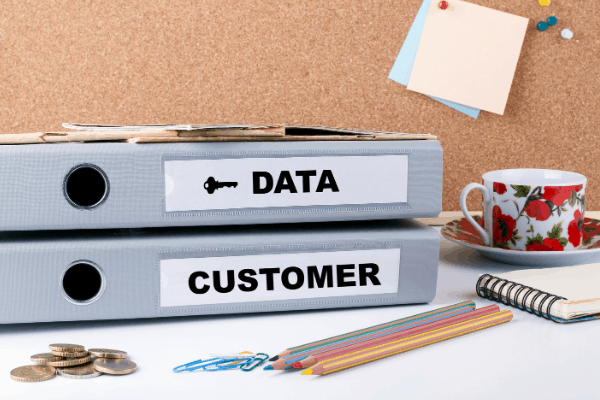As companies turn to new ways of unearthing consumer insights, some are missing a critical step in the process: contextualizing data. Understanding the “why” – not just the “what” – is essential to establishing actionable insights that can drive smart business decisions.
Context wasn’t a problem when organizations primarily relied upon focus groups and in-person surveys for market research. If any response was unclear, the interviewer had an opportunity to dive deeper. The respondent group was controlled. And the questions, which could be very specific, were asked of human beings by other human beings; as a result, nuances like sarcasm were easily understood.
There are major disadvantages to focus groups and in-person surveys, however. The approach isn’t scalable, and the data ages quickly. Honesty is a problem, too; the human connection can make it difficult for some interviewees to deliver negative feedback. But the biggest drawback is the fact that non-customers are excluded from focus groups and interviews. If you don’t know what your potential market is thinking, how can you adapt to new needs and wants or grow your customer base?
The migration to social listening tools for contextualized data
Companies now have efficient ways of accessing data from a broader consumer base. Social listening tools, in particular, have boomed in popularity; according to eMarketer, 50% of marketers across the globe have used these tools in the past year. But while social listening tools solve some of the common market research problems – they’re scalable, the data is constantly refreshed, and people generally say exactly what they really think, good or bad, online – they also present new challenges. For one, there’s an awful lot of data out there, and it can be hard to tell what’s relevant and what’s just noise.
“Noise” is anything that seems related to your product or brand but, upon closer inspection, really isn’t. Let’s say you run a skincare company specializing in luxury face masks. If you scraped social media for customer opinions on face masks at any time since the beginning of 2020, you’d likely encounter a huge volume of data – but not about the face masks you really care about.
Without a way to make a distinction between the two types of masks – the ones that deliver skincare formulas vs. the ones that filter viruses – the ecosystem from which you get insights would be fundamentally wrong. That’s why it’s so important to ensure that the information you’re analyzing is relevant and contextualized data; anything you build upon this would be untrustworthy, full of low-quality data, and completely devoid of relevant context.
Sentiments are also crucial to developing context, and social listening tools typically suffer from a lack of robust sentiment analytics. With many tools, you can see the ebb and flow of conversations around your skincare brand or your flagship face mask product but you can’t tell whether those conversations are positive, negative, or neutral. It’s just not that easy for technology to parse grammatical nuance, sarcasm, exaggeration, or humans’ marvelous ability to use and understand words in complete opposition to their dictionary definitions. (Imagine this review: “This face mask is so killer, I literally died after using it.” How would an algorithm classify it?) Add to this an inability to dive deeply into the details of these conversations in a scalable, comprehensive way and the result is a tool that can give you, at best, 70% accuracy as to what is happening, which could paint a totally inaccurate picture. Worse, these tools can’t explain the why behind the data – and that why is key to establishing context.
Using contextualized data to access actionable insights
Social listening tools don’t go far enough, but augmenting the data within them with other data sources and technology can deliver the context and insights that organizations are really after. Here’s how Skai’s solution does it:
Connecting data with powerful filtering
We rely on connected data from more than 13,000 sources – not just social media, but also product reviews, patent filings, conference agendas, news, research papers, sales data, blogs, and more – to ensure we have as many perspectives as possible. Advanced queries with rules around keyword inclusion ensure we identify only those data points that really belong in a given ecosystem; for our luxury skincare brand, that would mean eliminating any data points about COVID-19 or protecting against viruses.
Constant AI governance for contextualizing data correctly
Robust algorithm monitoring, along with manual data sampling and review, ensures we detect any anomalies before they can skew our context. For example, if there are typically about 10,000 individual face mask SKUs at a major online retailer, and then that number suddenly jumps to 50,000 SKUs, it’s probably not the case that our competitors suddenly flooded the market with new skincare products; our algorithm probably started picking up the wrong kind of face mask, and we will find and fix that error right away.
Establishing relevant context
Between data sampling and our patented technology, which includes an AI-driven Natural Language Processing (NLP) engine, we deliver over 95% relevancy. We can contextualize data down to the attribute level – by feature, ingredient, benefit, flavor, material, and more – to generate insights and predictions that are relevant to a specific market or category.
A case study on the importance of context
Here’s a real example of how Skai was able to provide a client with contextualized data that guided them towards better business decisions.
A well-established vitamin, mineral, and supplements brand found itself being outpaced by competitors in product innovation and sought a way to get ahead of the trends to reestablish itself as a market leader.
The brand’s own internal analytics platform combined sales trends on Amazon and point-of-sale data to track a decline in sales of apple cider vinegar gummies. At the same time, Skai data indicated an upward trend in consumer discussions around that product category.
Without context, decision-makers at the brand could have made a logical – but wrong – assumption: the social media buzz is all negative, which explains the falling sales.
Skai data was able to create the necessary context. Since we can map these conversations back to attributes at the category level, we were able to determine that the conversations were actually very positive and focused on a specific benefit: immune health. When the pandemic hit, consumer discussions around immune health increased alongside positive consumer sentiment towards apple cider vinegar which is assumed to have immune health benefits. The organization had access to “awareness scores” around claims benefits and features that they could capitalize on if they decided to launch their own apple cider vinegar gummy. Without this contextualized data, the brand would have missed out on yet another trend.
We have found that going from social listening alone to using a fully connected and contextualized external data set can double the accuracy rate of predictive analytics. Data only becomes an insight when it has the right context, and those insights are crucial to making better, more impactful decisions that drive innovation and improved business outcomes.
According to a Deloitte study, organizations leveraging data-driven insights in their decision-making processes were twice as likely to significantly exceed their business goals. Context is key to staying competitive.
————————————–
*This blog post originally appeared on Signals-Analytics.com. Kenshoo acquired Signals-Analytics in December 2020. Read the press release.





